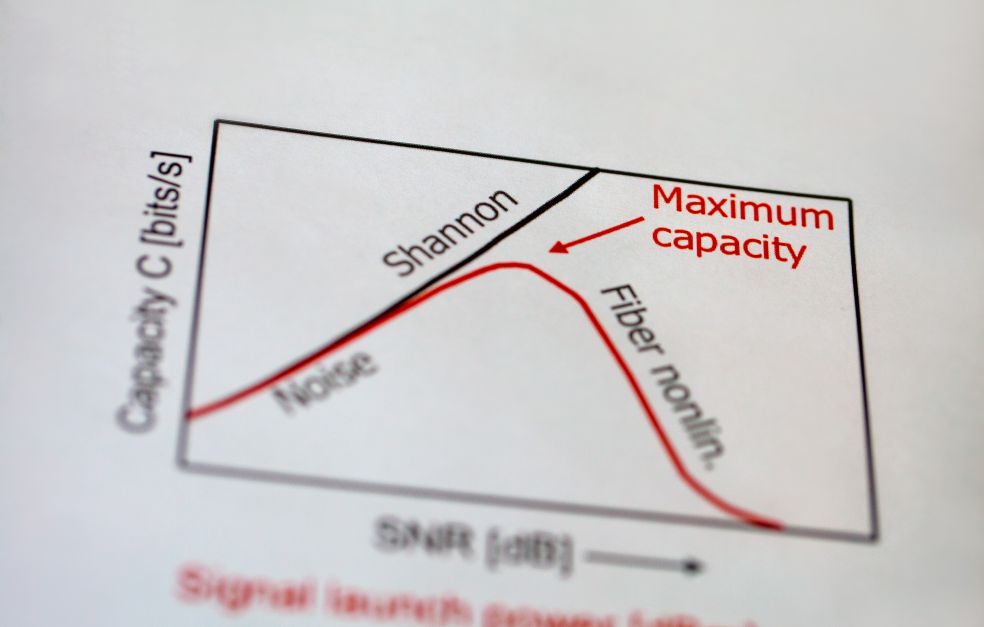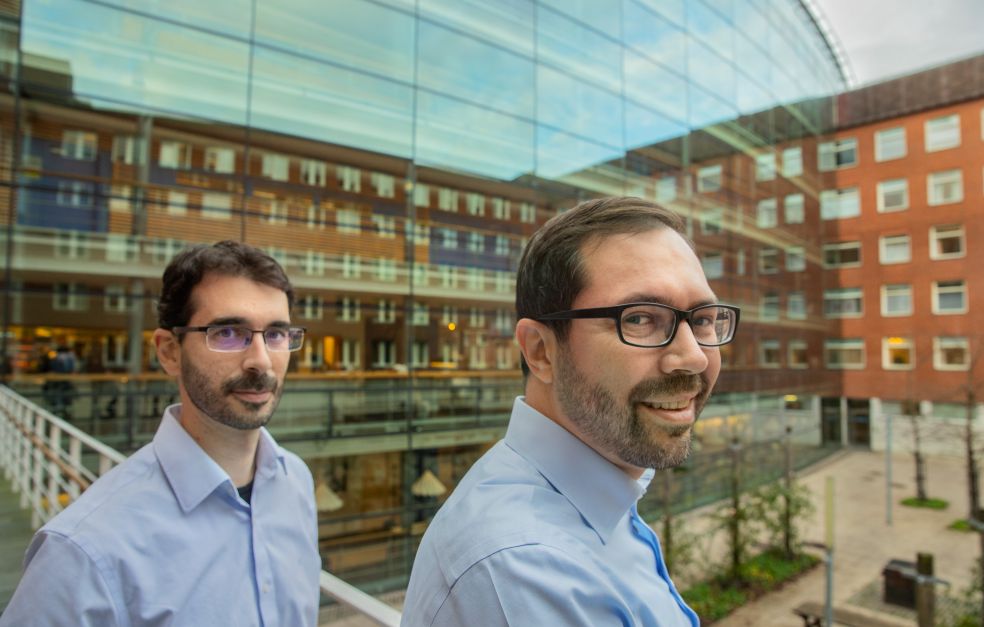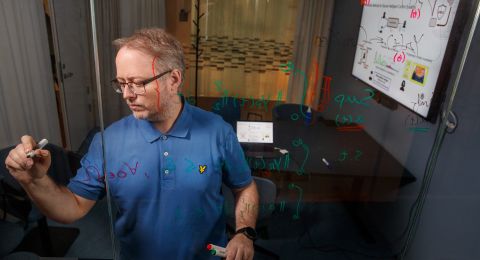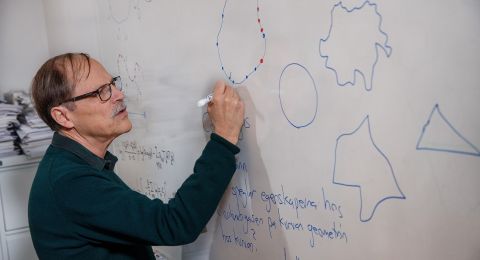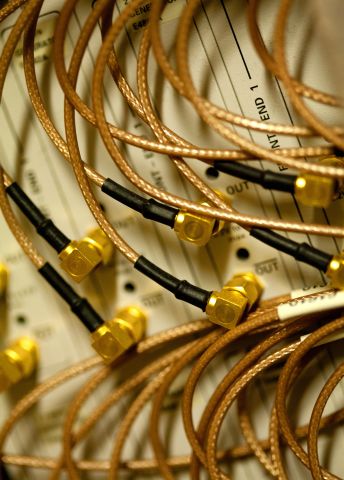
Project Grant 2018
Unlocking the full-dimensional fiber capacity
Principal investigator:
Professor Henk Wymeersch
Co-investigators:
Erik Agrell
Peter Andrekson
Magnus Karlsson
Jochen Schröder
Victor Torres
Institution:
Chalmers University of Technology
Grant in SEK:
SEK 30.7 million over five years
Ten thousand times more data traffic. Some estimates suggest that this is what we can expect when the new 6G mobile networks come online in a few years’ time. We are heading into a world with millions of connected devices and processes, vehicles, data-intensive Bitcoin transactions, virtual reality (VR) and augmented reality (AR). More and more applications are based on artificial intelligence (AI). As they are currently used, the fiber optic cables that carry the signals will not suffice.
“One approach of course would be to install more cables. But installation and maintenance of ten thousand times as many miles of fiber optics would be expensive, and no one really wants to pay more for data. So we want to find a way of using existing fiber optics more efficiently,” says Henk Wymeersch.
He is Professor of Communication Systems at Chalmers’ Department of Electrical Engineering. He is now heading a research team funded by Knut and Alice Wallenberg Foundation, whose task is to explore the maximum capacity of fiber optics, and demonstrate how that potential can be achieved in practice.
Four dimensions of fiber-optic communication
Wymeersch and his colleague Victor Torres, a researcher in fiber-optic communication, explain that an optical fiber has four basic dimensions with which it is possible to experiment when transmitting data. The fiber itself is made by drawing glass to a diameter slightly thicker than a human hair, and the signal is laser light reflected from the walls of the fiber, zigzagging from one end to the other. The first dimension consists of sending signals in sequence by switching the light on and off so pulses can travel in the available space. The second dimension is frequency: signals can be sent at different wavelengths simultaneously without interfering with each other. The third dimension is phase: light can be transmitted in different phases, thereby allowing more data to be transmitted simultaneously. The fourth and last dimension is space. A thicker fiber allows more signals to be transmitted simultaneously.
“If the fiber is very thin, only light at certain angles will pass through. Thicker cable allows use of more angles, but then the challenge is to distinguish the angles from each other. We need to design algorithms that are better at coping with the interference between signals,” Torres says.
All approaches at once
Each dimension requires a different approach. For instance, the sequence dimension requires hardware capable of turning a laser on and off as quickly as possible. Maximum capacity requires thicker fibers, but also sophisticated hardware that helps to separate light at different angles.
“Researchers have traditionally addressed one issue at a time, but we’re not doing that. We want to achieve interaction between all the dimensions,” says Torres.
Wymeersch likens the research to a gigantic highway system, where the team is trying to control the traffic on all the roads at the same time. Hundreds of thousands of frequencies must be transmitted in a coordinated way, making both the theoretical work and the practical experiments very complicated.
“We need researchers who understand information theory, who can model optical fibers, develop algorithms for signal processing. We require experts on the hardware, as well as theoreticians and experimentalists – none of us could have done this on our own. Not even three or four of us together,” Wymeersch explains.
Wymeersch himself is an algorithm expert, whereas Torres is responsible for the experiments.
“One major challenge in the project is to bridge the gap between these worlds, and learn to speak each other’s language,” Wymeersch says.
Curiosity the driver
The research teams are working in parallel with each other. The experimentalists are building systems that generate new data, while the theoreticians base calculations on the new data they receive, and adjust their models. The models then form the basis for new experiments.
“Chalmers is a perfect environment in which to meet the challenge. There are few places in the world, if any, that offer information theory, expertise on signal processing and scope for advanced experiments, all at the same time. We may open a new field in five years’ time, if we’re lucky,” Torres says.
The researchers hope to pave the way for expanding fiber-optic network capacity over the coming decades. But they do not know for sure how much additional capacity they can achieve. They all agree that their methods will not reduce capacity, but no one knows how much better it will be.
“That’s really the main driver – scientific curiosity. Can we make it better, and if so, by how much? We want to find out, and we want to be the first to do so. The impact on society is really just a consequence of what we’re doing,” Wymeersch concludes.
Text Lisa Kirsebom
Translation Maxwell Arding
Photo Magnus Bergström

